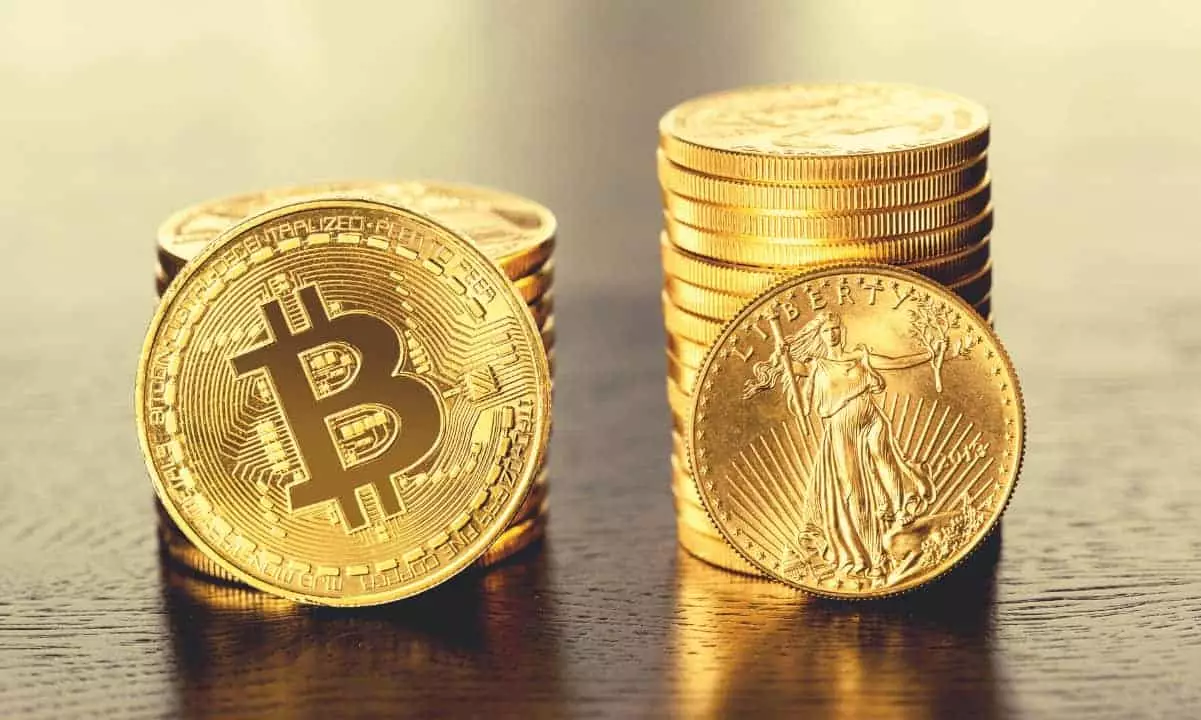As gold scales unprecedented heights, breaking the $3,000 barrier for the first time, the implications for the global economy are profound. It’s not merely the allure of a shiny, precious metal that is driving this surge; it is a tangible reflection of a world fraught with economic anxiety. Investors are no longer just betting on stocks or cryptocurrencies; they are seeking sanctuary in gold, a commodity that has withstood the test of time. The ascent of gold signals not just a trend, but a potential shift where traditional safe havens are rediscovered amid a backdrop of increasing geopolitical tensions and inflationary pressures.
Inflation and Central Bank Acquisition: Fuel to the Fire
Gold’s ascent can be attributed significantly to soaring inflation, which has escalated to levels not seen in decades. With central banks worldwide on a buying spree, stockpiling over 1,000 tonnes annually for years now, the dynamics surrounding gold have transformed dramatically. This feverish demand has not only created upward pressure on its price but has also led to a marked reduction in available supply. As central banks aim to solidify their reserves amid fears of a weakening dollar and volatile fiat systems, the hoarding of gold emerges as a crucial strategy, intensifying its value.
The recent surge in physical gold demand—reportedly increasing 115% in a mere two months—underscores a pivotal point: investors are rushing towards security. In an age where central bank digital currencies and inflationary pressures loom large, this shift is more than a reaction; it is an admonition to the outdated faith in fiat currencies.
Shattering Traditional Correlations
One of the most intriguing aspects of gold’s recent performance is its divergence from traditional asset correlations. Typically, gold prices decline when the U.S. dollar strengthens. Yet, astonishingly, gold has maintained its rally even as the dollar showcases resilience. This decoupling raises questions about market dynamics and could be indicative of a broader dismissal of historical norms. It suggests potential revisions in how we perceive asset interrelations—gold appears to be reclaiming its status as the ultimate safe haven, unhindered by the dollar’s fortunes.
In a fascinating turn, gold advocate Peter Schiff has argued that gold’s rise despite a robust dollar could be signaling a seismic shift in investor sentiment. Such an indication raises palpable concerns and points to a future where gold stands resilient, immune to the burdens of fiat instability. This creates a narrative where traditional correlations may no longer hold, and gold’s status as an invulnerable asset could be iconic in today’s economy.
Bitcoin and Gold: An Evolving Duel
The chasm between gold and Bitcoin continues to widen, underscoring Bitcoin’s vulnerabilities as it grapples with turbulent market conditions. While Bitcoin fans frequently tout the cryptocurrency as “digital gold,” recent performance metrics tell an unequivocally different story. With Bitcoin’s value plummeting, the ratio of Bitcoin to gold has shifted dramatically, suggesting that what was once a stronger correlation is rapidly dissolving.
Schiff’s assertion that “gold is the apex predator that will eat Bitcoin” serves as a provocative reminder of the cryptocurrency’s volatility. A once-blazing trail has morphed into trepidation, as Bitcoin follows the tech-heavy NASDAQ lower, potentially placing it at the mercy of broader market trends. This stark pivot raises legitimate queries about its long-term viability as a store of value. If it cannot sustain itself outside the whims of tech stock fluctuations, what does that reveal about its role compared to the steadfast legacy of gold?
A 4,000-Year Legacy versus a 16-Year Experiment
The historical narrative surrounding gold—spanning millennia as a secure store of wealth—contrasts sharply with Bitcoin’s relatively brief and tumultuous existence. The permanence associated with gold, refined through centuries, establishes a benchmark that Bitcoin has not yet met. While innovative, Bitcoin’s growing pains and the ephemeral nature of its value are a stark reminder that new technologies do not inherently displace established pillars of economic stability.
Today, as cryptocurrencies grapple with their identities and the tumult of financial markets, gold continues to assert itself as a time-tested refuge amid uncertainties. This juxtaposition of history and modernity raises a vital question: are we witnessing the resurrection of gold’s primacy in an age beset by financial chaos? Gold’s recent rally may indeed be more than just a fleeting moment; it symbolizes a broader repudiation of fleeting market fashions in favor of enduring value.
















Leave a Reply